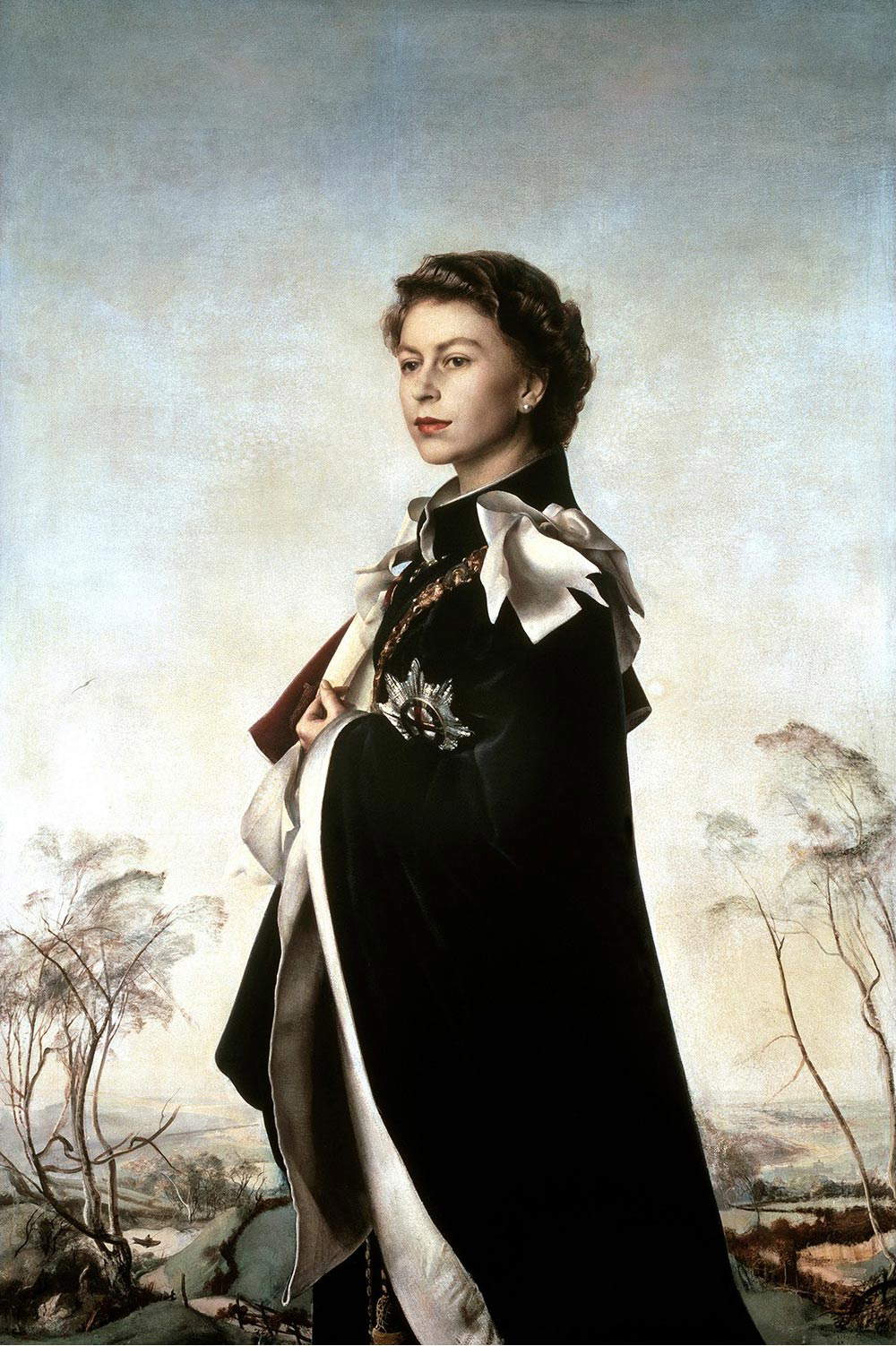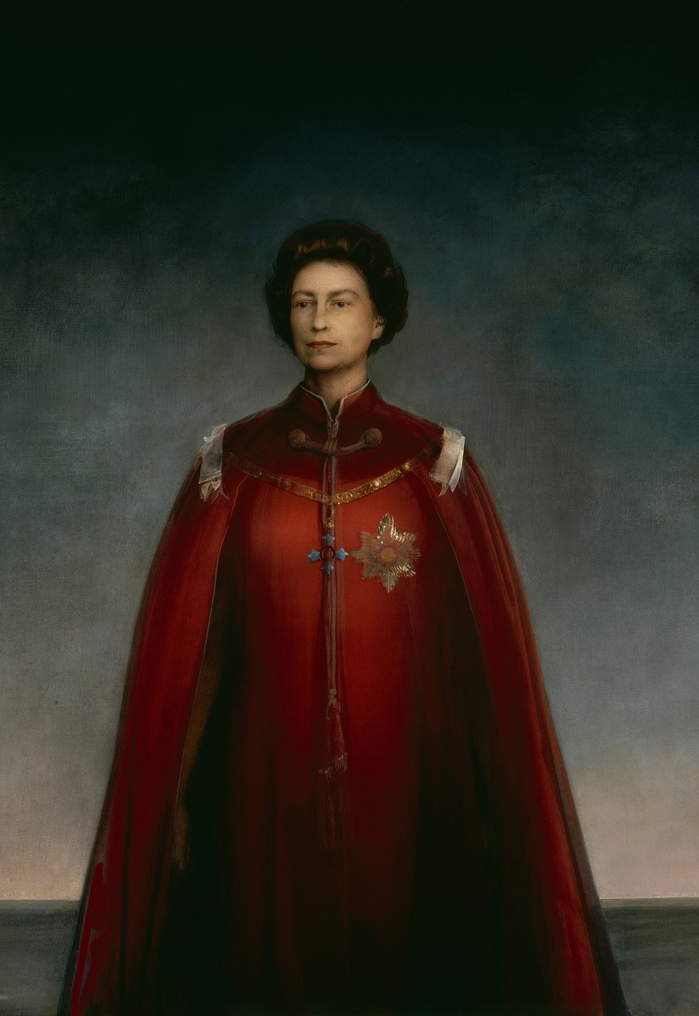When Pietro Annigoni painted a portrait of Queen Elizabeth II of England.
When Pietro Annigoni (Milan, 1910 - Florence, 1988) was commissioned in 1954 to paint a portrait of Queen Elizabeth II of England, at first he thought it was a joke. He had been given a letter from the Worshipful Company of Fishmongers, also known as the Fishmongers’ Company, one of London’s 110 livery companies, the guilds that, as in Renaissance Florence, brought together the city’s businesses. He thought it was a joke because he could not find a connection between the “Fishmongers’ Company” (this was the business brought together by the guild) and the Queen of England. Then, delving deeper, Annigoni realized that its patrons were the illustrious members of a company that had been operating since as early as 1272, and that had had among its members and among its “Prime Wardens” (the figure presiding over the body) some of the most eminent nobles, politicians, and men of letters in the Kingdom. Even the Duke of Edinburgh, Prince Philip, husband of Elizabeth II, had been Prime Warden of the company, between 1961 and 1962.
As chance would have it, some members of the Fishmongers’ Company were great admirers of Annigoni’s painting, one of the four modern reality painters, the group that Annigoni founded, in 1947, along with Gregorio Sciltian and brothers Antonio and Xavier Bueno. Four painters eager to claim a “moral painting in its intimate essence,” as they wrote in their manifesto, and who gave life to an action that was configured, scholar Stefano Sbarbaro has written, by proceeding “on the one hand in the condemnation of the new languages of art advocated by the avant-garde, whose mendacious manifestations of a ’false progress,’ and the stylistic degenerations that led painting to a sterile, groundless exercise,” and on the other through “a refined and original evocation of higher models highs offered by the painting of the past, in which the concepts of truth and reality converge in a universal and absolute vision of art.” A painting against everything that had happened since postimpressionism, against the avant-gardes, against what they called the “École de Paris,” a painting that looked to the ancient while rejecting academicism, that observed the real with a precise and sincere approach. Critics did not welcome the proposal of the “modern painters of reality,” who lasted united for just a couple of years. Instead, the reaction of the public and patrons was different: Annigoni was seen as a prodigious and meticulous painter, and as a very talented portraitist.
Annigoni in 1949 had moved, at the encouragement of a colleague, the Bulgarian painter Dimitri Kratschkoff, to England, in an attempt to exhibit at the Royal Academy: he had succeeded, thanks in part to a letter of recommendation from Salvatore Ferragamo, of whom Annigoni had executed one of the most famous portraits. And it was precisely in 1949 that he had exhibited his works at the Royal Academy: it was the first in a long series of exhibitions at the London academy. Five years later, when he received the letter from the Fishmongers’ Company, it was one of his students, Tim Whidborne, who told him it was no joke. “It emerged,” Annigoni recounted in his autobiography, “that many of the most influential members of the company had been at my exhibition before they decided to honor me with the commission for the portrait that was later to hang in the room next to the portraits of kings and queens of centuries past.” Annigoni had quickly become painter to the queen, able to produce a portrait that made him world famous, and from which he derived a sequence of notable commissions, from the portrait of John Fitzgerald Kennedy to that of Pope John XXIII.

“I rose feverishly this morning, and down in spirit,” Annigoni still recalled in his diaries thinking back to the time when he was waiting for the portrait of Elizabeth II. “Invasion of photographers and journalists. Incredible banality of questions. Everyone is impressed by the fact that the queen will come to pose in my studio; in the studio, which is really excellent, that I got, this time, in the quiet Edwardes Square. Of course the thing is unusual, and yet it has been of no small relief to me. It will be a difficult battle this portrait, and God send me luck.” A few days later: “Today, at Buckingham Palace, first meeting with the Queen. Intense, invincible emotion that endures. I will not forget this day.” Annigoni also recalled the posing sessions, “As a model, the Queen does not facilitate my task. She does not feel the pose, nor does she seem to care about it. And she talks a lot. On the other hand, she is kind, simple, and never appears distant [...]. The full royal family - Queen, Queen Mother, Princess Margaret, Prince Philip and the children - came to see the portrait. Somewhat scrutinizing the mother, full of charm, freshness, and surrounded by an emanation of founded sensuality the princess. Much praise I would say sincere.”
Sixteen sessions were needed before arriving at the final result. The painter and the queen between them spoke in French; Annigoni, despite having spent some time in England, still did not speak well in English. At the time, he was forty-four years old, she twenty-eight. For the portrait, Annigoni decided to draw on ancient tradition, opting for a cut from the knees up, in a three-quarter pose. Elizabeth II is wearing the robes of the Order of the Garter: a large dark cloak lined with white silk, with white bows on the shoulders and the cockade pinned to her chest. The pose was the same as the portrait of Jane Seymour, third wife of King Henry VIII, painted around 1537 by Hans Holbein the Younger. The setting, an imaginary country landscape, is so reminiscent of the landscapes of second-century Florentine painting that were very dear to Annigoni. In the distance, above a river, a small boat with a fisherman can be glimpsed, a tribute to the patron. The queen’s expression is absorbed, her haughty and proud gaze not meeting that of the viewer. With his portrait Annigoni, Valentino Bellucci wrote in his recent monograph on the Tuscan painter published by Giunti, had wanted “to symbolize, through the sunny image of a splendid young woman who had just ascended the throne, all the hopes and expectations of a new epoch in English history after the sufferings and traumas of World War II.” And again Bellucci recalled that Annigoni was the first Italian artist after Titian to be called “by a court for an exclusive service.” Of course, other Italians would have painted foreign sovereigns (think, for example, of the portrait of Napoleon done to Andrea Appiani), but a strong bond was established between Annigoni and the queen, and especially at the time that was the only portrait of the queen in fieri. Annigoni therefore felt the weight of his responsibility, not least because there was a lot of pressure from the press.
The critics, however, were not very favorable to Annigoni: the Times’ young art critic, 31-year-old David Sylvester, reviewing the exhibition in which the painting was exhibited in 1955, first compared Annigoni’s painting with Holbein’s earlier one, granting preference to the latter, and then wrote that the work had sacrificed “the reality of the monarch to the idea of monarchy,” and that Annigoni had indeed “succeeded in capturing something of the dignity and beauty of Her Majesty,” but that he had “failed to capture her vitality.” In his autobiography, Annigoni somehow wanted to defend himself against this criticism: he wrote that it was a specific choice to depict the queen “alone and distant,” because this was the impression he had gained from talking to her as Elizabeth II told the artist about her childhood memories. “Alone and distant,” then, despite the fact that she lived, by Annigoni’s own admission, “in the hearts of millions who loved her.”
There were also positive criticisms, however. In Life magazine, for example, one could read that “in spite of the abundance of royal photographers, the art of royal portraiture is in no danger of dying in Britain. Regiments, guilds, and clubs seem ready for painters to continue painting and the queen to continue posing for years to come. The most recent and most beautiful of Queen Elizabeth’s paintings is by Italian Pietro Annigoni. Commissioned by the Worshipful Company of Fishmongers, the guild that presides over the fish trade in London, Annigoni set up his studio at Buckingham Palace. Throughout the winter, the queen posed sixteen times. Between poses, Annigoni worked with sketches and Order of the Garter dresses worn by a model. He recently unveiled his work, a majestic image of the queen on a landscape near Windsor.”

It must be considered, however, that the painting met with very wide public acclaim, so much so that it was reproduced everywhere. In 1963 an official postage stamp was even issued with the image of the queen portrayed by Annigoni. The royal family liked it, so much so that soon afterwards they commissioned Annigoni to paint a portrait of Margaret, and about fifteen years later, in 1969, the painter was asked to paint a new portrait of the queen, this time on behalf of the trustees of the National Portrait Gallery. For the next portrait, Annigoni chose a decidedly more monumental pose: Elizabeth II is depicted here wearing the robes of the Order of the British Empire. Eighteen poses were required in this case, eight of which led to a pastel study that was later personally purchased by the queen in 2006 (it had in fact remained among Annigoni’s family possessions). It is a work with a decidedly more austere tone than the first: Annigoni had clearly stated that his idea was to paint Elizabeth as a monarch, to give a sense of the responsibility that her role entails. Finally, in 1972, Annigoni would execute a tondo with the queen and the Duke of Edinburgh on the occasion of their silver wedding, commissioned by the Imperial History Library: the design was to be used to produce some commemorative gold and silver plates.
However, the 1955 portrait remains the most famous, the one dearest to the public, and also the one considered by many to be the best portrait of the queen. Annigoni’s painting was in fact followed by a great many other portraits, also done by many of the world’s best painters. Almost all of them, however, were always panned by critics. Annigoni’s portrait, however, has remained engraved in the public imagination even decades later, and is still one of the most famous icons of the Queen of England.
Warning: the translation into English of the original Italian article was created using automatic tools. We undertake to review all articles, but we do not guarantee the total absence of inaccuracies in the translation due to the program. You can find the original by clicking on the ITA button. If you find any mistake,please contact us.




























